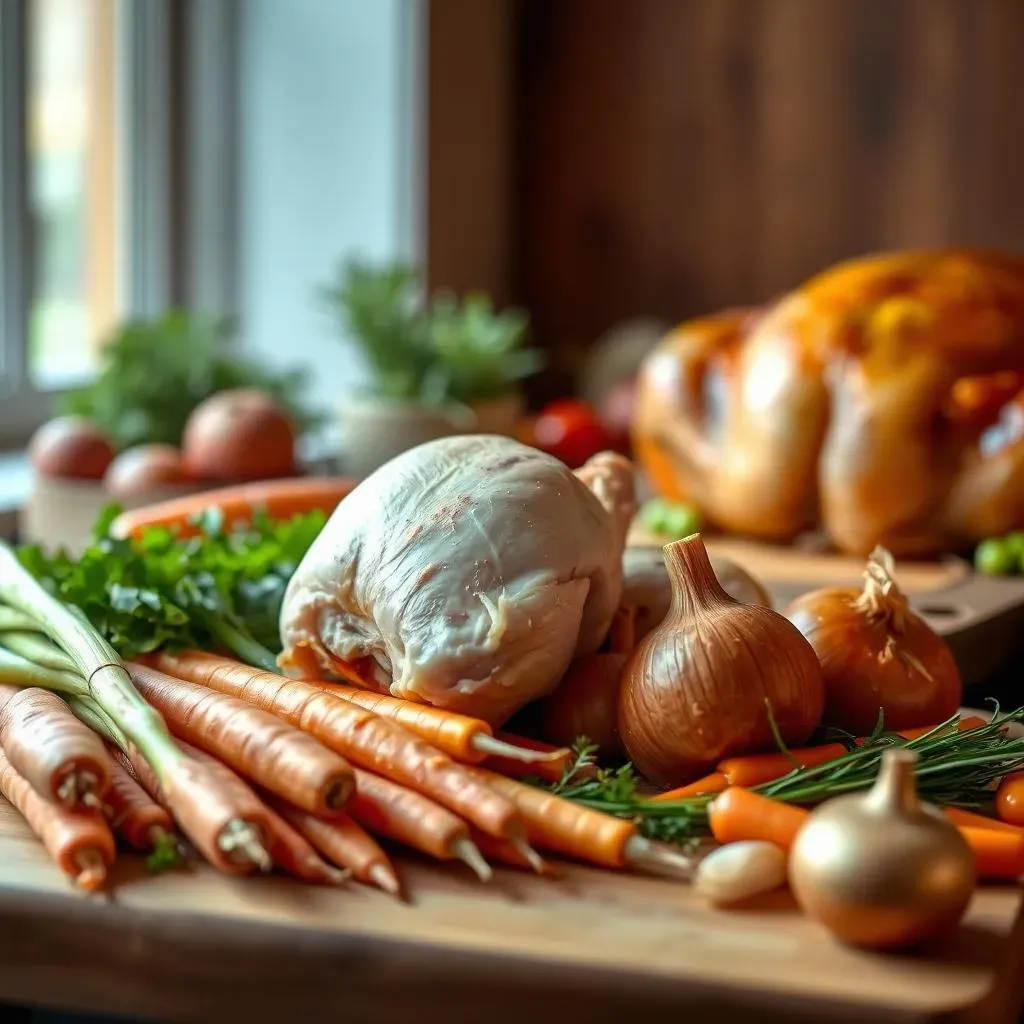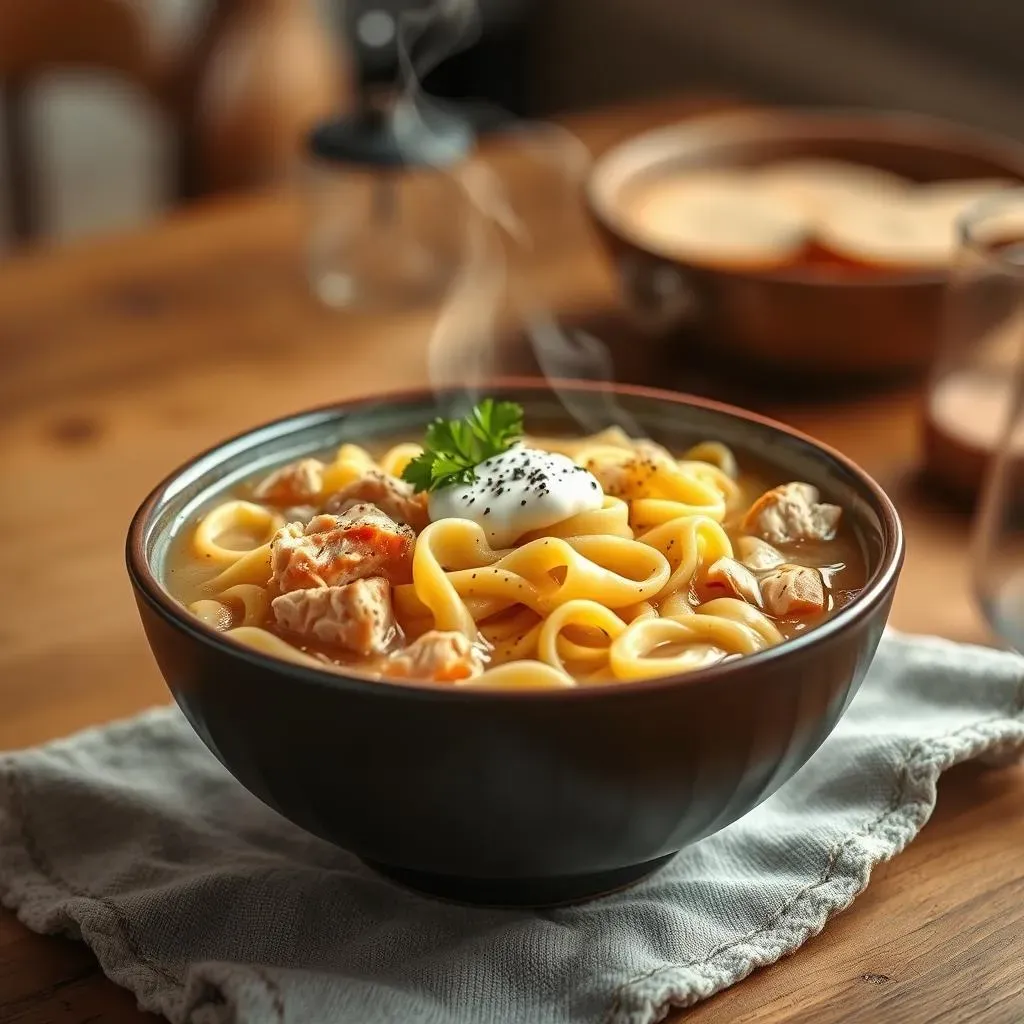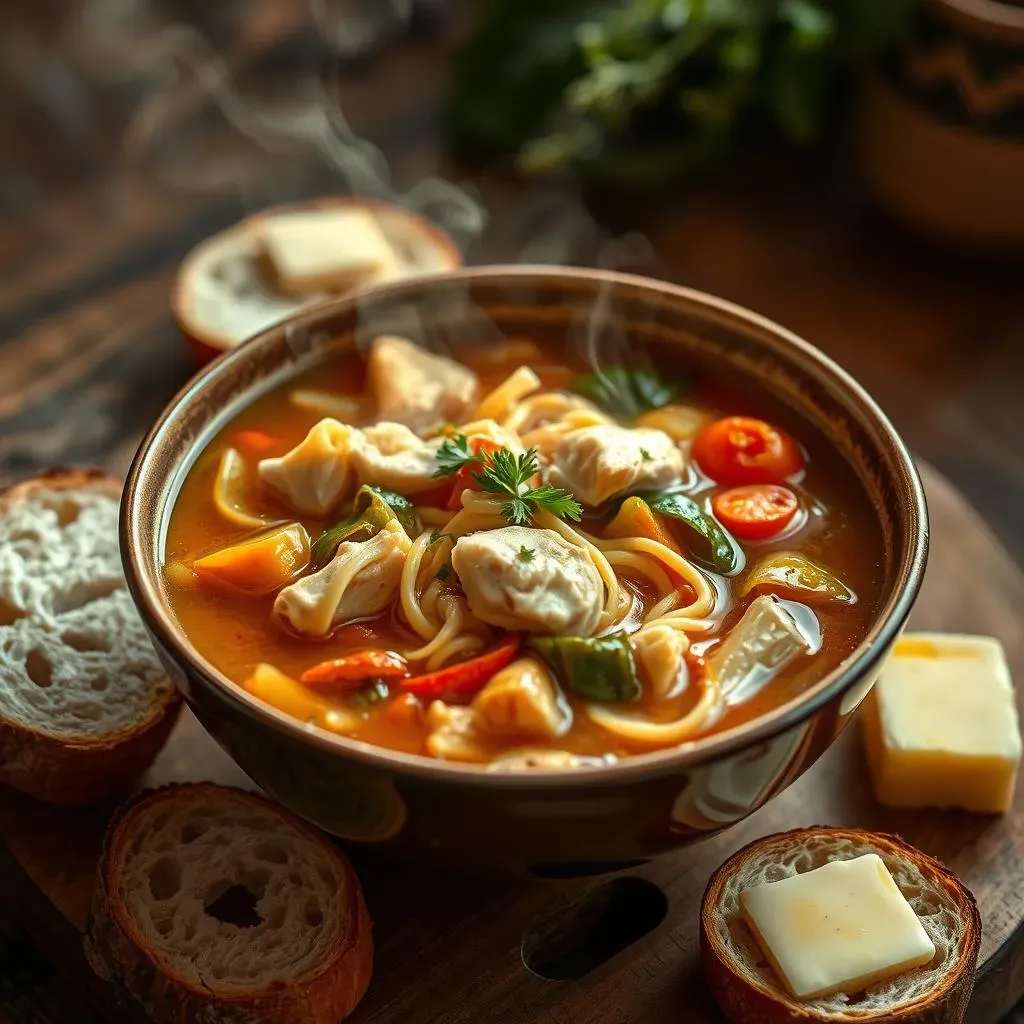Table of Contents
Are you ready to ditch the canned stuff and experience the pure, unadulterated joy of a truly *homemade* chicken noodle soup? This isn't your grandma's recipe (though we're sure she'd approve!), it's a modern take on a classic comfort food, perfect for chilly evenings or when you're feeling a little under the weather. This article will guide you through a simple, step-by-step process to create a bowl of deliciousness that'll warm your soul. We'll cover everything from selecting the freshest ingredients to mastering the perfect broth and adding those perfectly tender noodles. Forget those bland, watery soups; this homemade chicken noodle soup recipe step by step will show you how to make a culinary masterpiece in your own kitchen. Get ready to impress yourself (and maybe a few friends) with a soup so good, it'll become a family favorite. So grab your apron, gather your ingredients, and let's get cooking!
Gathering Your Ingredients: A Checklist for Success

Gathering Your Ingredients: A Checklist for Success
The Protein Powerhouse: Choosing Your Chicken
First things first: the star of our show – the chicken! You've got options here. A whole roasting chicken gives you the most flavorful broth, a real depth that store-bought broth just can't replicate. But if time's tight, don't stress! Rotisserie chicken from the grocery store works wonders too. It’s a fantastic shortcut. Just shred it and add it later for a super easy rotisserie chicken soup. For a richer, more intense flavor, consider using bone-in, skin-on chicken thighs. They're more forgiving than breasts and render a ton of flavor into the broth. If you're feeling ambitious, you can even make your own chicken stock ahead of time – check out our guide on making chicken stock for extra flavor!
No matter which chicken you choose, make sure it's fresh and smells good. You want that beautiful, rich chicken flavor to shine through in your soup. A little tip: If using a whole chicken, remove the giblets before cooking. Trust me on this one; you don't want those accidentally ending up in your soup!
Chicken Option | Pros | Cons |
|---|---|---|
Whole Roasting Chicken | Most flavorful broth | Takes longer to cook |
Rotisserie Chicken | Convenient and fast | May lack depth of flavor |
Bone-in, Skin-on Chicken Thighs | Rich flavor, forgiving | Can be slightly fattier |
The Veggie Vanguard: Building Your Flavor Base
Now for the supporting cast: your vegetables! The classic trio of carrots, celery, and onion forms the base of most chicken noodle soups. These three add a lovely sweetness and subtle earthiness that complements the chicken beautifully. Feel free to experiment! A few diced potatoes add heartiness, while a touch of fresh parsley or thyme at the end elevates the soup's aroma and flavor profile. For an extra-flavorful broth, consider adding some garlic or even a bay leaf. For a lighter soup, you can reduce the amount of vegetables or choose lower-calorie options. For a unique twist, why not try adding some zucchini or other seasonal veggies? You can find a great recipe for a soup with vegetables online!
Remember to wash your veggies thoroughly before chopping. And don't be afraid to get creative! A little bit of experimentation can go a long way. Adding some fresh herbs at the end can completely transform the flavor profile. If you're feeling adventurous, try adding some fresh herbs like thyme or rosemary for a more complex flavor. For a lighter soup, consider using less onion or reducing the amount of carrots. To make your life easier, you can prep your vegetables ahead of time. Just chop them and store them in an airtight container in the refrigerator until you're ready to cook.
- Carrots (adds sweetness)
- Celery (adds subtle earthiness)
- Onion (adds savory depth)
- Potatoes (adds heartiness)
- Garlic (adds pungent flavor)
- Fresh herbs (parsley, thyme, rosemary)
Cooking Up a Storm: A StepbyStep Guide to Perfect Broth

Cooking Up a Storm: A StepbyStep Guide to Perfect Broth
Simmering to Perfection: The Art of Broth Creation
Alright, let's talk broth. This is where the magic happens. For the most flavorful broth, start with your chosen chicken (remember those options from earlier?). Place it in a large pot, cover with cold water, and add your chopped veggies (carrots, celery, onion – the holy trinity!). Bring the mixture to a boil, then reduce heat to a gentle simmer. Think of it as a slow, comforting hug for your chicken and veggies. This low and slow cooking process allows the flavors to meld beautifully, creating a rich and complex broth. Skim off any foam that rises to the surface – it’s just impurities, and we want a crystal-clear broth.
Simmer for at least an hour, or even longer if you’re feeling ambitious (and have the time!). The longer it simmers, the more intense the flavor will become. Adding a bay leaf or two during this time adds another layer of complexity. If you're using a whole chicken, it should be cooked through after about 1.5-2 hours; you can easily check by piercing the thickest part of the thigh with a fork. For rotisserie chicken, you can skip this step entirely and add it later.
- Use cold water to start
- Simmer, don't boil
- Skim off foam
- Simmer for at least an hour
- Add aromatics like bay leaf
Strain and Season: Refining Your Broth's Character
Once your chicken is cooked and your broth is fragrant, it's time to strain it. This removes all those little bits of chicken and veggies that you don't want floating around in your finished soup. Use a fine-mesh sieve or colander lined with cheesecloth to ensure a perfectly smooth, clear broth. Discard the solids or use them to create a separate side dish – the possibilities are endless! Once strained, taste your broth. Season generously with salt and pepper to taste. A pinch of salt enhances the flavors of the broth, bringing out the best in your hard work. Don't be shy with the seasoning; you can always adjust later, but under-seasoning is a culinary crime.
For an extra layer of flavor, consider adding a splash of soy sauce or Worcestershire sauce. These add a subtle depth and umami to the broth. If you're looking for a richer broth, you can add a spoonful of chicken paste or a little bit of butter before serving. These additions will not only enhance the flavor but also improve the texture of your soup. Remember, this is *your* soup, so feel free to experiment and find what works best for you. A little experimentation can lead to some surprisingly delicious results. You can also find inspiration from other recipes like our bone broth soup recipe!
Flavor Enhancer | Effect |
|---|---|
Soy Sauce | Adds umami and saltiness |
Worcestershire Sauce | Adds savory complexity |
Chicken Paste | Enhances richness and depth |
Preparing the Chicken: From Bird to Broth
Let's talk about the chicken itself. If you used a whole chicken, let it cool slightly before shredding the meat. Remove all the skin and bones; we only want the tender, juicy chicken in our soup. You can easily shred the chicken with two forks or use your hands (if you're feeling brave!). Set the shredded chicken aside; we'll add it back in later. If you used rotisserie chicken, simply shred it and set it aside. It's as simple as that. If you opted for chicken thighs, they'll be falling-off-the-bone tender after simmering. Simply remove them, let them cool, and then shred them. It's always a good idea to separate the chicken fat. Save it for another recipe or toss it – it's entirely up to you. You can find more details on this in our how-to guide!
Remember to save that flavorful chicken broth! It's the foundation of your delicious soup. Using homemade broth makes all the difference, adding a depth of flavor that you just won't get from store-bought options. If you have leftover broth, you can easily store it in the refrigerator for up to 3 days or freeze it for longer storage. This is a great way to make sure you have a base for future soup creations. Don't be afraid to experiment with different herbs and spices to create your own unique flavor combinations. Remember, a little experimentation can go a long way!
"The best chicken noodle soup is the one that tastes like home." - Anonymous
Noodle Nirvana: Adding the Finishing Touches and Serving Suggestions

Noodle Nirvana: Adding the Finishing Touches and Serving Suggestions
Noodle Time: Choosing Your Perfect Pasta
Time to add the starches! Egg noodles are the classic choice for chicken noodle soup, offering a lovely chewiness that holds up well in the broth. But don't limit yourself! Try different shapes and sizes for variety – ditalini, small shells, or even broken spaghetti work beautifully. For those with dietary restrictions, gluten-free egg noodles are readily available and make a fantastic substitute. Looking for something different? Check out our recipe for homemade chicken noodle soup with egg noodles for inspiration. If you're feeling adventurous, consider using different types of noodles, such as rice noodles or zucchini noodles, for a unique twist. For a healthier option, consider using zucchini noodles or shirataki noodles, which are low in calories and carbohydrates. If you’re watching your carb intake, you might appreciate our keto-friendly chicken noodle soup recipe!
Remember to cook your noodles according to package directions. You want them tender but not mushy. Overcooked noodles will ruin the texture of your soup. Don't overcook them! Slightly undercooked noodles are better than mushy ones. Once cooked, drain the noodles and gently stir them into your simmering broth. Adding the noodles towards the end of the cooking process ensures they don't become overly soft. A little tip: If you're using fresh noodles, they'll cook much faster than dried noodles. Be sure to keep a close eye on them to prevent overcooking.
- Egg Noodles (classic choice)
- Gluten-Free Noodles (for dietary needs)
- Rice Noodles (lighter option)
- Zucchini Noodles (low-carb option)
Finishing Touches: Elevating Your Soup
Now for the final flourish! Gently stir in your shredded chicken. Taste again and adjust seasoning as needed. A squeeze of lemon juice brightens the flavors, while a sprinkle of fresh parsley adds a pop of color and freshness. If you're feeling fancy, a dollop of sour cream or a swirl of crème fraîche adds a creamy richness. Consider adding some freshly cracked black pepper for a little extra zing. You can even garnish with a sprig of fresh herbs for an elegant touch. Want to make it even heartier? Check out our recipe for chicken noodle soup with dumplings!
Remember, this is your soup – personalize it! Experiment with different herbs, spices, and garnishes to find your perfect combination. A dash of hot sauce adds a kick, while a sprinkle of everything bagel seasoning provides a savory crunch. Don't be afraid to get creative and make it your own. A simple addition can make all the difference in the overall taste and presentation of your soup. Serve hot, and enjoy! The best way to enjoy your soup is by sharing it with friends and family. Enjoy!
Garnish | Flavor Profile |
|---|---|
Fresh Parsley | Fresh, herbaceous |
Lemon Juice | Bright, acidic |
Sour Cream/Crème Fraîche | Creamy, rich |
